11 Most Sustainable Underwear Brands: The Conscious Consumer’s Guide
Impactful Ninja is reader-supported. When you buy through links on our site, we may earn an affiliate commission.
Learn more
Learn more
.
Hey fellow impactful ninja ? You may have noticed that Impactful Ninja is all about providing helpful information to make a positive impact on the world and society. And that we love to link back to where we found all the information for each of our posts. Most of these links are informational-based for you to check out their primary sources with one click. But some of these links are so-called "affiliate links" to products that we recommend. First and foremost, because we believe that they add value to you. For example, when we wrote a post about the environmental impact of long showers, we came across an EPA recommendation to use WaterSense showerheads. So we linked to where you can find them. Or, for many of our posts, we also link to our favorite books on that topic so that you can get a much more holistic overview than one single blog post could provide. And when there is an affiliate program for these products, we sign up for it. For example, as Amazon Associates, we earn from qualifying purchases. First, and most importantly, we still only recommend products that we believe add value for you. When you buy something through one of our affiliate links, we may earn a small commission - but at no additional costs to you. And when you buy something through a link that is not an affiliate link, we won’t receive any commission but we’ll still be happy to have helped you. When we find products that we believe add value to you and the seller has an affiliate program, we sign up for it. When you buy something through one of our affiliate links, we may earn a small commission (at no extra costs to you). And at this point in time, all money is reinvested in sharing the most helpful content with you. This includes all operating costs for running this site and the content creation itself. You may have noticed by the way Impactful Ninja is operated that money is not the driving factor behind it. It is a passion project of mine and I love to share helpful information with you to make a positive impact on the world and society. However, it's a project in that I invest a lot of time and also quite some money. Eventually, my dream is to one day turn this passion project into my full-time job and provide even more helpful information. But that's still a long time to go. Stay impactful,Affiliate Disclosure
Why do we add these product links?
What do these affiliate links mean for you?
What do these affiliate links mean for us?
What does this mean for me personally?
![]()
Amid growing concerns about the textile industry’s environmental impact, there is pressure to find greener clothes for your wardrobe, from outerwear to the pieces we wear closest to our skin—underwear. Unfortunately, fashion greenwashing makes it harder for you and all other consumers to figure out which clothing brands offer the most eco-friendly garments. So, we had to ask: Which are the most sustainable underwear brands?
The most sustainable underwear brands include Subset, KENT, and WAMA, which use low-impact materials, minimize waste, and strive for textile circularity. In addition, The Very Good Bra and Organic Basics commit to reducing their carbon footprints and producing responsibly.
Whether you are searching for some comfortable panties or a casual wireless bralette to add to your wardrobe without negatively impacting the soil, the water, the animals, and other people, there is a brand for you. So, let’s keep reading to learn more about the most sustainable underwear brands and how they ensure sustainable, ethical practices.
Here’s How We Selected the Most Sustainable Underwear Brands
Underwear can be one of the higher impact and less sustainable clothing items due to the conventional use of synthetic elastics and the limited end-of-life options.
“Sustainable: The ability to be maintained at a certain rate or level | Avoidance of the depletion of natural resources in order to maintain an ecological balance”
Oxford Dictionary
The brands on this list were chosen based on their commitment and actions to promote sustainable practices while reducing the environmental impacts of the textile industry.
They are transparent about their materials, processes, and workforce management within their supply chain.
Some brands focus their efforts on reducing waste and optimizing natural resources while others strive to reduce the carbon footprint of their clothes.
All of these brands share the commitment to reshape the textile industry toward a more sustainable and Earth-friendly sector.
These Are the 11 Most Sustainable Underwear Brands
Most Sustainable Underwear Brands
Overall, these underwear brands are sustainable. Yet, they take various approaches to reduce environmental impacts and uphold ethical standards. Let’s dive into each brand and find out more.
Subset: Carbon-Neutral Organic Cotton Underwear


“By seeking out the most environmentally responsible processes, low-impact fabrics and ethical manufacturing, we swap the greenwashing for integrity and accountability. ”
Subset
🌎
How do they ensure their sustainability?
Subset prioritizes sustainability by sourcing a high percentage of low-impact fabrics, offsetting carbon emissions, and facilitating underwear recycling. Firstly, they use GOTS-certified organic cotton, TENCEL™, recycled polyester, and regenerated and recycled nylon to reduce environmental impacts. For example, the Tank Bralette contains certified organic cotton (95% of the fabric), recycled nylon (83% of the straps), and TENCEL™ (69% of the band). Organic cotton, in particular, accounted for 92,1% of their fiber portfolio for 2022. Secondly, they reduce the impact of their carbon emissions with offsetting projects verified by Climate Neutral. For example, in 2022, they supported clean energy projects in India and Kenya. More importantly, they find ways to reduce their carbon footprint, such as using solar-powered energy in their supply chain and localized sourcing. Thirdly, in 2018, Subset launched the world’s first recycling program to save underwear, socks, bras, and tights from ending up in landfills. In 2022, they took back nearly 1 million of their own clothing items, as well as those of other brands.
🌐
How do they ensure their ethics?
Subset ensures their ethics by being transparent about their supply chain, all the way from farming to ginning, spinning, knitting, finishing, and packaging. Much of their supply chain is certified by Fairtrade International – Small Producers Organisations and Global Organic Textile Standard (GOTS). They also ensure that workers at their suppliers are paid a living wage. Regarding the impact of their operation, on each product page, Subset discloses the item’s impact, including not only carbon emission (which is offset) but also the reduction of water usage and synthetic pesticides thanks to their use of organic cotton.
🤝
Are they part of any giving-back programs?
Subset donates new, clean underwear to individuals and communities in need. In 2022, they donated over 2,260 items to organizations across the US, including Bronx Fire Relief, I Support the Girls, and Cultivate Initiatives. They also hold team volunteer days where their staff get together and work toward good causes, such as building an outdoor library.
🛍️
What is their product range?
- Best for: womenswear, menswear
- Product range: bras, panties, loungewear, maternity wear, plus-size
- Price range: $$$
- Size range: 2XS–4XL
KENT: Plastic-Free and Plant-Based Everyday Basics

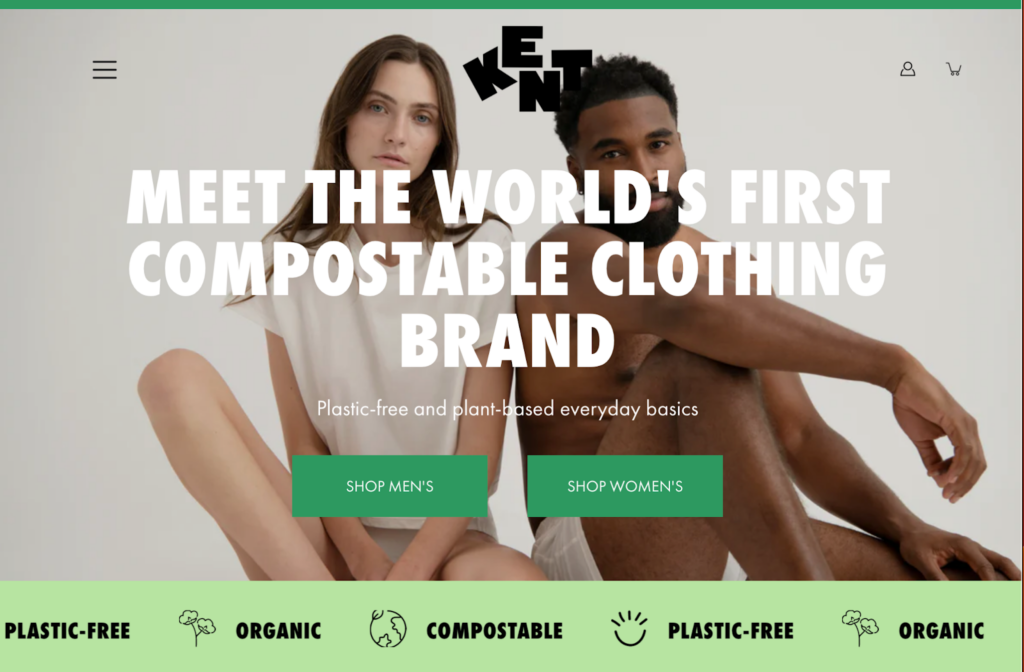
“We put sustainability at the heart of everything we do. From using natural, plant-based materials to creating an ethical and transparent supply chain. We focus our efforts on areas that have the biggest impact – products, people and planet.”
KENT
🌎
How do they ensure their sustainability?
KENT ensures sustainability by using exclusively natural, plant-based, and organic materials that also have the potential to return to nature as a resource. They source organic cotton certified by the Global Organic Textile Standard to make their underpants, crop tops, and T-shirts. Their solution for elastics—the stretch element conventionally made with synthetic fabrics—is a bio-based material made from renewable tree resources. KENT also uses plant-based, acid-free, compostable packaging. Once worn out, KENT’s underwear can be composted at home. Additionally, the Kent Compost Club is a compost take-back program offering a circular solution to clothing waste. They have partnered with a regenerative, organic farm in Southern California to repurpose briefs in compost and offer consumers credits to spend in their store to return the worn-out underwear. Regarding their climate impact, the brand reduces their emissions by manufacturing locally in the US and offering carbon-neutral shipping as an option at checkout. Additionally, they offset their emissions in high-quality, verified projects that meet the Climate Neutral Standard and are certified Climate-Neutral.
🌐
How do they ensure their ethics?
KENT traces all of their supply chain and visits their supplier regularly.
🤝
Are they part of any giving-back programs?
KENT is a member of 1% for the planet, pledging at least 1% of annual sales to environmental solutions for a healthy planet.
🛍️
What is their product range?
- Best for: womenswear, menswear
- Product range: underwear, crop tops, T-shirts
- Price range: $$$
- Size range: XS–3XL
WAMA: The Pioneer in Underwear Made in Plant-Based from Hemp Plants
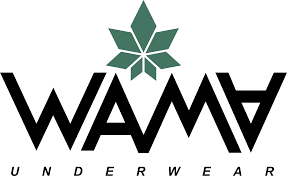

“We believe hemp is the answer to cut down on pollution and save nature.”
Shakib Nassiri, founder of WAMA
🌎
How do they ensure their sustainability?
WAMA ensures sustainability by creating low-impact fabrics based on the plant-based fibers from organically grown hemp plants, in consideration of the crop’s high carbon sequestration potential and low inputs. Their materials are organic and contain no excess harmful toxins. On top of that, their supply chain includes family-run organic farms, where hemp fibers are extracted using only water and dew—the most sustainable retting method—as well as an organic hemp spinner, an OEKO-TEX®-certified factory where their hemp-based fabrics are finished using low-impact dyes, and other factories complying with the BSCI system. WAMA undies are delivered in custom boxes made from 100% recycled materials, recycled poly mailers, and naturally biodegradable tissue paper.
🌐
How do they ensure their ethics?
WAMA ensures their ethics through full transparency about their supply chain. Their facilities are upheld by their supplier code of conduct, which covers all of the ILO Four Fundamental Freedoms principles, ensuring opportunities for safe work, economic development, and sustainable business. The factories where their products are sewn are BSCI certified, which means safe workplace standards for all employees. Finally, WAMA is a Green America Certified Business and a PETA-Approved Vegan brand.
🤝
Are they part of any giving-back programs?
WAMA is not known to be part of any giving-back programs.
🛍️
What is their product range?
- Best for: womenswear, menswear
- Product range: underwear, bralettes, plus-size
- Price range: $$
- Size range: XS–XXXXL
The Very Good Bra: 100% Plastic-Free Undergarments
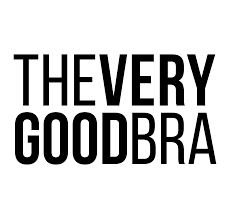
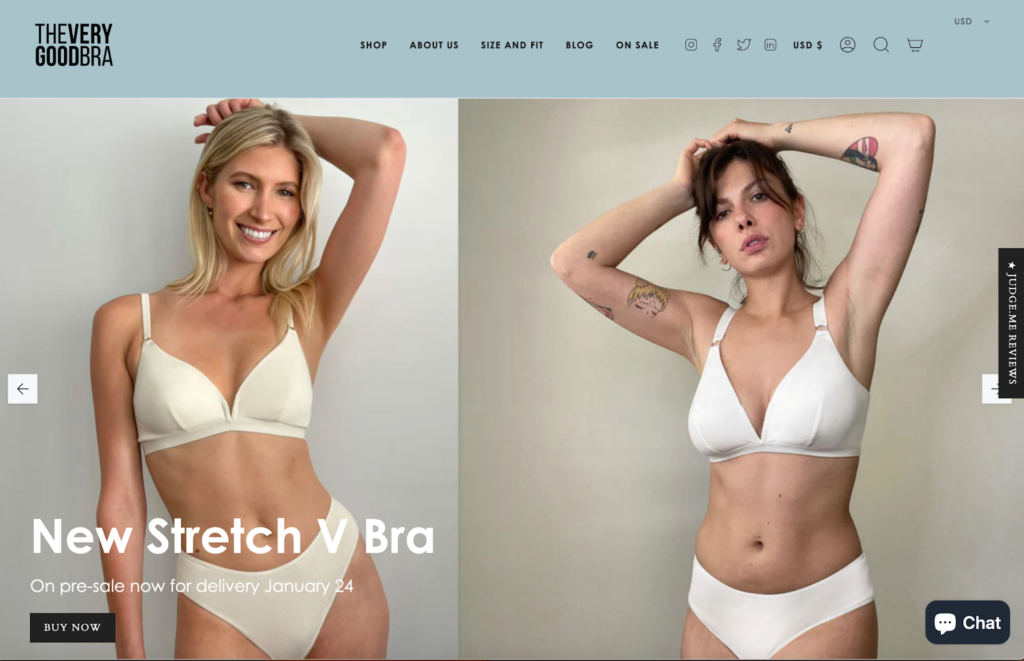
“Our materials are sourced worldwide to be 100% botanically circular, leaving no negative environmental impact at end of life. ”
The Very Good Bra
🌎
How do they ensure their sustainability?
The Very Good Bra ensures sustainability by prioritizing natural materials to make fully compostable bras, operating pre-sales to avoid overproduction, and facilitating services for repairing and reselling their items. Firstly, they exclusively use natural components for not only their base fabrics but also their sewing thread, labeling, and accessories so that their worn-out bras can be composted in your own garden. For example, the list of materials for the V for Victory Bra includes 100% organic cotton body fabric and liner fabric, as well as 100% plant-based thread and elastic from organic cotton and natural rubber. Additionally, The Very Good Bra packs their orders in recyclable tissue and a 100% compostable or 80% recycled and recyclable poly mailer. Secondly, they run at least three pre-sales a year with new styles, materials, or colors to plan their inventory more efficiently across their size range, minimizing waste. On top of that, they use all leftover fabric to manufacture small runs of sleepwear and briefs. Lastly, the brand offers replacement straps and runs a Facebook Buy Swap and Sell Group for bras needing new homes, extending the lifespan of each product and reducing its life-cycle’s environmental impact.
🌐
How do they ensure their ethics?
The Very Good Bra traces most of their supplier chain. They also have a Factory Code of Conduct, which covers four of the ILO’s Fundamental Principles and Rights at Work.
🤝
Are they part of any giving-back programs?
The Very Good Bra works with a social enterprise to warehouse and fulfill orders, providing employment opportunities to people of all abilities who would otherwise struggle to find meaningful work. Through their partnership with i=Change, customers have the choice at checkout of three charities, to whom they can donate $1, post-sale. Additionally, The Very Good Bra has donated sample fabric to The Social Outfit, as well as to Whitehouse Design fashion students. They have also sent usable sample bras to The Uplift Project and Thread Together.
🛍️
What is their product range?
- Best for: womenswear
- Product range: bras, briefs, sleepwear, loungewear
- Price range: $$$
- Size range: S–XXL
Organic Basics: A Carbon Neutral Brand for Everyday Essentials

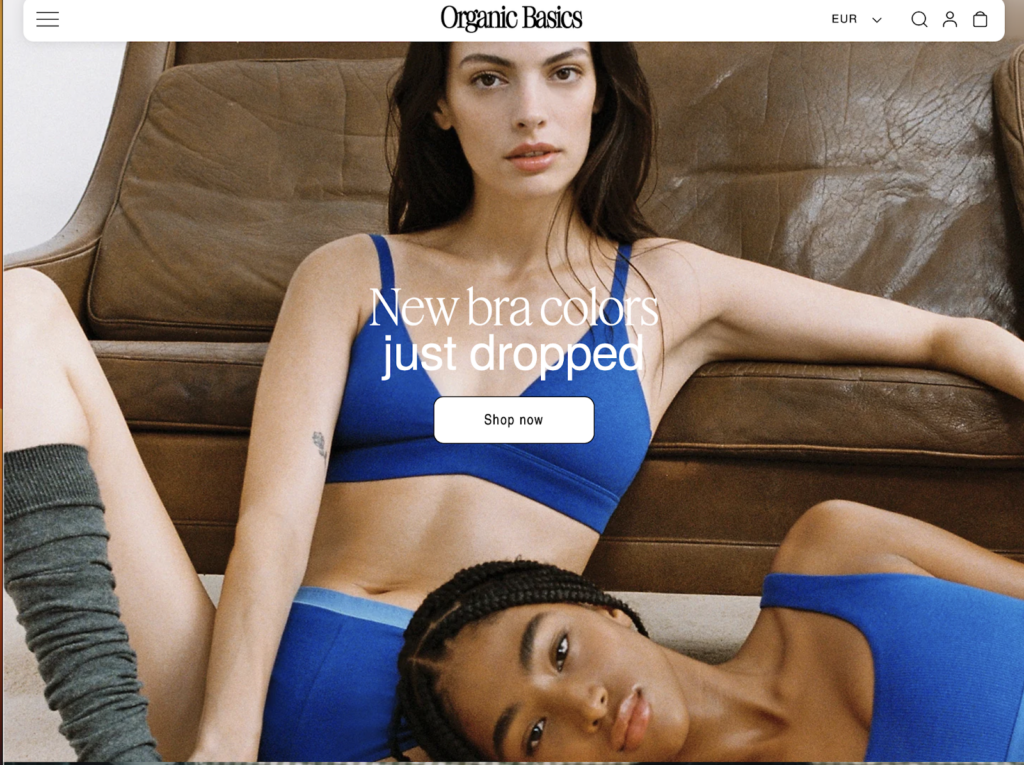
“We make our basics to be both Earth- and people-friendly — carefully choosing materials and fabrics that care for our environment, only partnering with factories that consider their impact too, and designing all the basics for all bodies.”
Organic Basics
🌎
How do they ensure their sustainability?
Organic Basics promotes sustainability by choosing fabrics based on their environmental footprint and lifetime durability. Their clothes are made of organic fabrics (cotton certified by the Global Organic Textile Standard), low-impact textiles (TENCEL™ Lyocell certified by the STANDARD 100 by OEKO-TEX®), or recycled materials (recycled wool, recycled cotton, and recycled nylon). They use a small percentage of elastane (spandex) in some garments to extend the products’ longevity, which ultimately extends the lifespan. For example, the Recycled Cotton Move Bralette is made with 70% organic cotton, 25% recycled cotton, and 5% elastane. Organic Basics is fully transparent about the impact of their products, enabling consumers to understand their share in using the clothes. They also partner with Made2Flow, which calculates their emissions, and One Carbon World, helping them reduce and offset all their emissions. Finally, they are also a B Corporation.
🌐
How do they ensure their ethics?
Organic Basics works only with trusted, certified factory partners, who ensure that their workplace is free of child labor and forced labor and that their workers enjoy a safe working space, earn a living wage, and benefit from employee perks like free lunches and childcare. They show full transparency of the location and practices in their factories. Organic Basics also audits or visits most of their suppliers.
🤝
Are they part of any giving-back programs?
Organic Basics donates 1% of the value of all orders to sustainable projects. Their partnership with Beam Impact enables consumers to choose where their 1% donation will go, at no extra cost to the consumers, to support local charities that help Nature Conservation, Ocean Conservation, Rewilding, or Sustainability & Gender Equity.
🛍️
What is their product range?
- Best for: womenswear, menswear
- Product range: underwear, underwear, bottoms, T-shirts, tops, sweatshirts, hoodies, knitwear dresses, swimwear, socks, plus-size
- Price range: $$$
- Size range: XXS–XXL
Boody: Fit-For-All Everyday Essentials Made With Eco-Friendly Materials

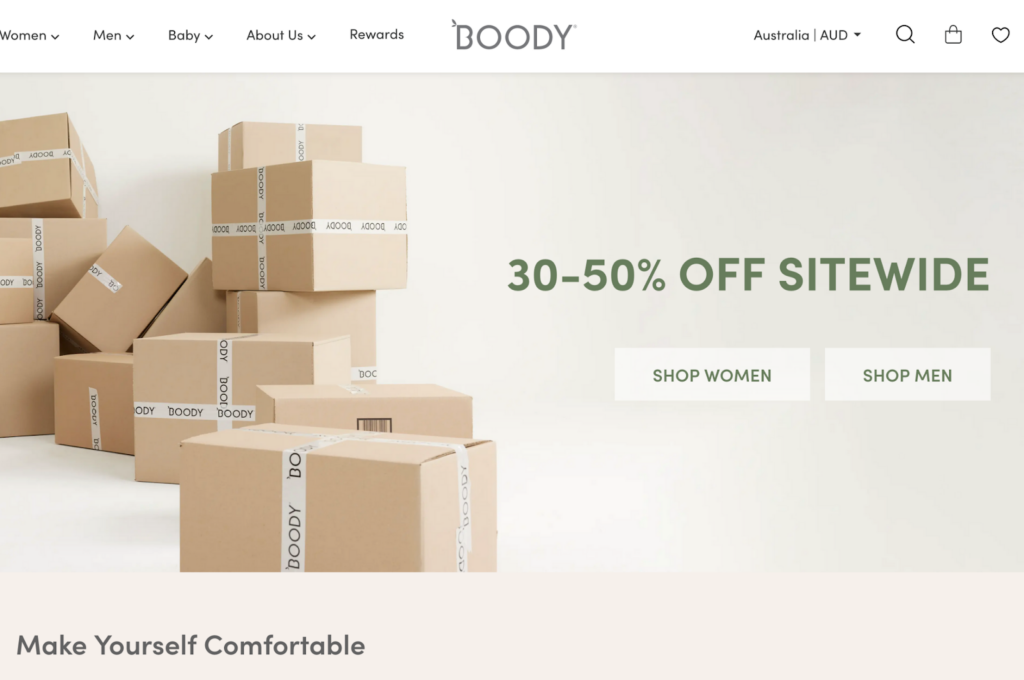
“Boody emphasises quality and simplicity. We bypass trends and fads as we believe they lead to overconsumption and waste.”
Boody
🌎
How do they ensure their sustainability?
Boody ensures sustainability by sourcing organic bamboo and organic cotton for their fabrics, reducing manufacturing waste, recycling all water used in production, and using recycled packaging. By sourcing plant materials from organic farms, Boody helps to keep out synthetic pesticides and fertilizers. Furthermore, their bamboo lyocell, LYOLYTE™, and bamboo viscose are manufactured in closed-loop systems where liquids and solvents are recycled, reused, or safely removed. Their cotton fibers are organically grown and certified by the Global Organic Textile Standard. Boody also has a zero-waste design, which enables knitting garments in tubes, leaving behind very little fabric wastage. Lastly, they encourage recycling of Boody’s ready-to-retire apparel by partnering with UPPAREL to launch The Goodness Loop. This platform enables consumers to buy a return shipping label, which starts the recycling process, and get a gift voucher to redeem on Boody’s new products.
🌐
How do they ensure their ethics?
Boody enforces fair labor practices by upholding suppliers to their Code of Conduct, which covers four of the ILO’s Fundamental Principles and Rights at Work. They also trace most of their supply chain. Lastly, the suppliers in their final production stage are certified by the Worldwide Responsible Accredited Production (WRAP).
🤝
Are they part of any giving-back programs?
As a 1% for the Planet member, Boody donates 1% of all their online sales to non-profits who help protect the environment. Additionally, they give 10% of all online beanie sales to the Chris O’Brien Lifehouse, a not-for-profit hospital and research institute dedicated to transforming cancer care. They also work with Thread Together to provide new clothing to less privileged Australians.
🛍️
What is their product range?
- Best for: kidswear, menswear, womenswear
- Product range: underwear, activewear, maternity wear, socks, stockings, tights, shorts, plus-size
- Price range: $$
- Size range: XXS–XXL
Thunderpants USA: Fairtrade Organic Cotton Underwear
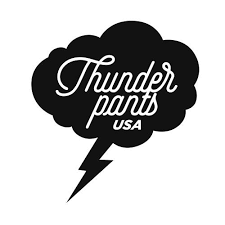
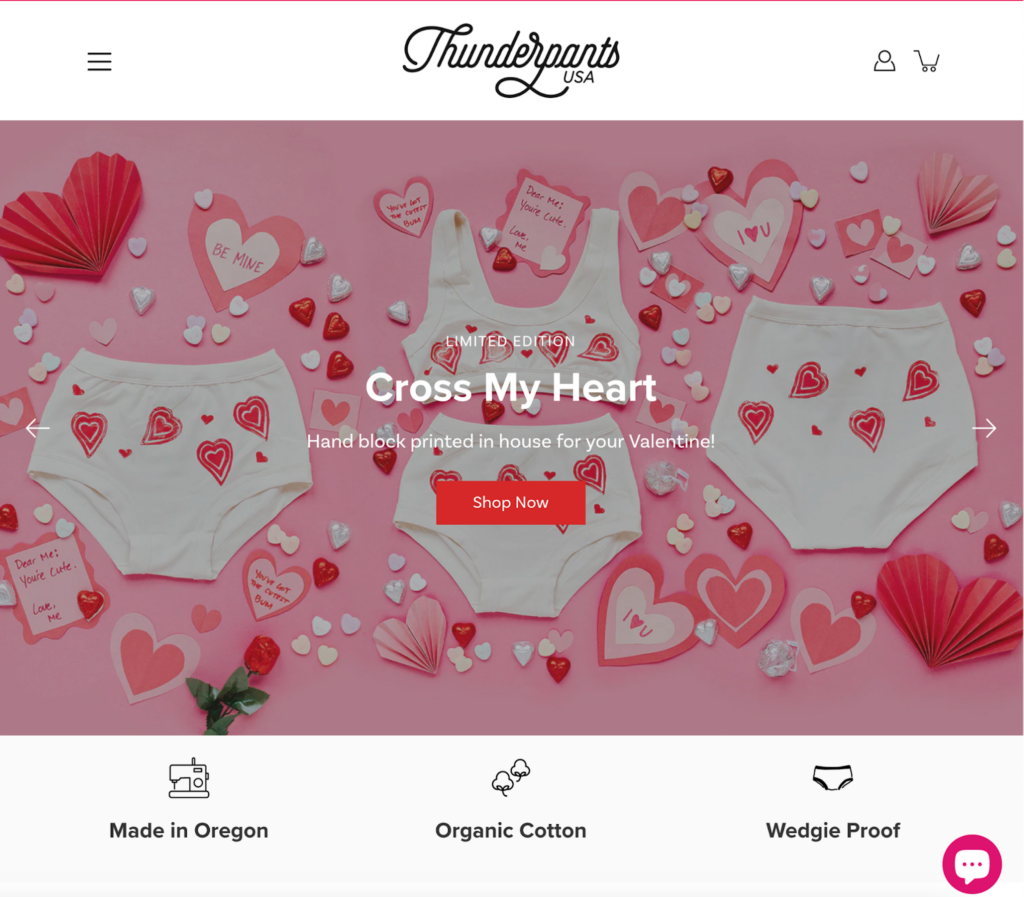
“Our goal is to produce clothing that you can feel great about. Take pride in your undies – we do.”
Stephan Rosenkilde, Co-Founder of Thunderpants
🌎
How do they ensure their sustainability?
Thunderpants ensures their sustainability by lowering the impacts of materials, from fabrics to finishing chemicals to packaging. Firstly, their undies’ fabrics are made with a high percentage (90%) of organic cotton certified by leading sustainability standards (Global Organic Textile Standard, Fairtrade, and Organic Content Standard). Further down the life-cycle in the manufacturing stage, Thunderpants uses low impact non-toxic dyes and water-based ink in all their products. Additionally, they opt for EcoEnclose’s 100% recycled poly mailers to help close the loop and lower their carbon footprint. Thunderpants also sources part of their fabric from a US mill and hold the entire final stage of production in the US to shorten the transporting distances and further reduce their carbon footprint.
🌐
How do they ensure their ethics?
Thunderpants ensures their ethics by being transparent about their supply chain. They trace all their suppliers and ensure payment of a living wage throughout their supply chain. Additionally, inclusivity is one of the brand’s core values. Thunderpants uses diverse modeling and offers sizes to fit everybody.
🤝
Are they part of any giving-back programs?
Thunderpants values giving back and supports a number of nonprofits, including but not limited to The Loveland Foundation, Black Girl Ventures, St John’s Center for Opportunity, Asian Americans Advancing Justice – Atlanta, and Dress for Success of Oregon.
🛍️
What is their product range?
- Best for: womenswear
- Product range: underwear, swimwear, camisoles, bike shorts, leggings
- Price range: $$$
- Size range: XS–4XL
TomboyX: Gender-Neutral Clothing Brand Committing to Sustainability
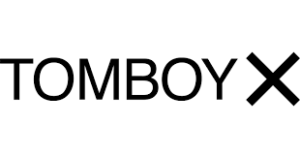
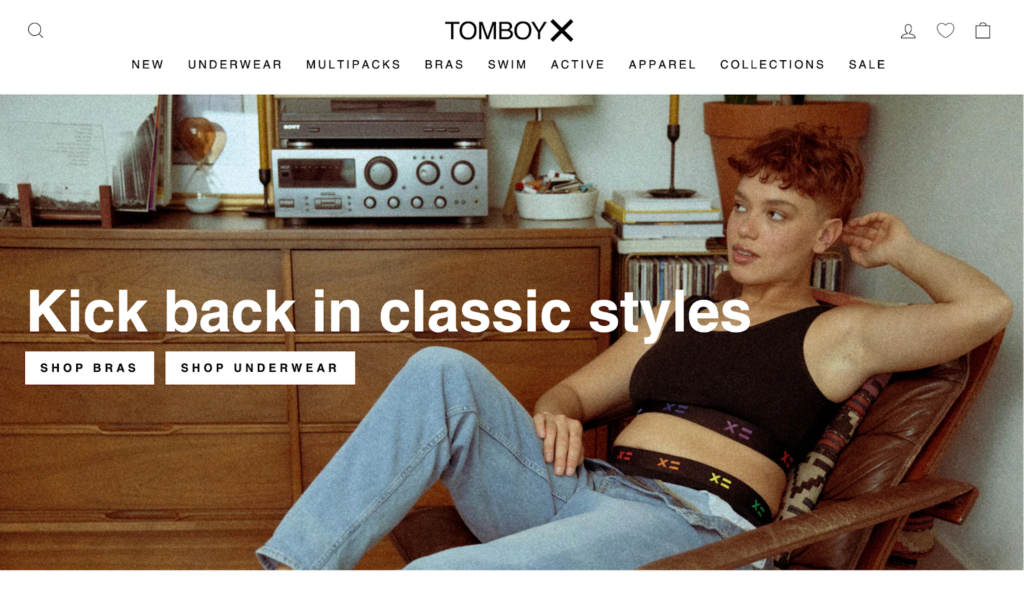
“When it comes to sustainability, we start right at the beginning.”
TomboyX
🌎
How do they ensure their sustainability?
TomboyX ensures sustainability by sourcing low-impact materials for fabrics and packaging. They use organic and recyclable fabrics in as many designs as possible without compromising quality, comfort, or cost. Specifically, they use TENCELTM Modal made from renewable beechwood pulp in a closed-loop system. Additionally, TomboyX sources part of their cotton from BCI-certified suppliers, guaranteeing a sustainable and farmer-centric process. All their cotton products are further certified by OEKO-TEX®. On top of that, TomboyX has a Recycled Selection, including items like recycled tucking underwear, which demonstrates their commitment to reducing waste and lowering their environmental impacts. Regarding packaging, TomboyX’s orders are packed in individual biodegradable zipper bags. In 2022, TomboyX HQ moved to a new Gold LEED-certified building that operates more efficiently in terms of energy and water while generating less waste.
🌐
How do they ensure their ethics?
TomboyX traces part of their supply chain and visits all suppliers in the final production stage to monitor health and safety issues. They state that most of their facilities are certified by WRAP and the Fair Labor Association, two leading organizations guaranteeing fair treatment and competitive wages for factory workers.
🤝
Are they part of any giving-back programs?
TomboyX fosters a diverse circle of LGBTQ+ folks, athletes, people outside of the confined size spectrum, and those who just like having quality, all-day comfort.
🛍️
What is their product range?
- Best for: gender neutral clothing
- Product range: underwear, bras, swimwear, swimwear, activewear, loungewear, sleepwear, compression tops, compression tanks, tees, accessories
- Price range: $$$
- Size range: XS–6XL
Pantee: Upcycled Underwear Made With Deadstock T-Shirts
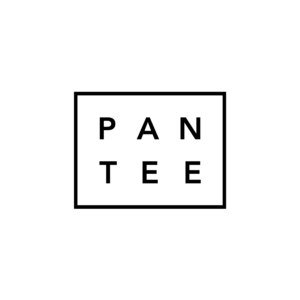

“From underwear to wardrobe staples, we’ve combined comfort, quality and sustainability to create the world’s least basic basics.”
Pantee
🌎
How do they ensure their sustainability?
Pantee ensures sustainability by sourcing low-impact fabrics, minimizing waste, and using recycled packaging. Firstly, they use a high percentage of eco-friendly textile materials, including deadstock fabrics, GOTS-certified organic cotton, and recycled nylon. Specifically, all their bras and briefs are made with 95% cotton and 5% spandex, upcycled from deadstock. Secondly, they manufacture in small batches to avoid unnecessary waste. Lastly, Pantee ships all orders in either a paper mailer bag or a cardboard box made from recycled and recyclable materials. Additionally, their products are individually lined in an #INVISIBLEBAG, a water-soluble, compostable, biodegradable alternative to plastic bags.
🌐
How do they ensure their ethics?
Pantee ensures their ethics by partnering with suppliers certified by the leading sustainability standards (Global Organic Textile Standard and Sedex Members Ethical Trade Audit – SMETA Best Practice Guidance). They also have a Supplier Code of Conduct covering four of the ILO’s Fundamental Principles and Rights at Work.
🤝
Are they part of any giving-back programs?
Pantee is a member of 1% for the planet, pledging at least 1% of all revenue to environmental organizations.
🛍️
What is their product range?
- Best for: womenswear
- Product range: underwear, leggings, tops, bodysuits, sweatshirts, sweatpants, socks
- Price range: $$
- Size range: XS–XL
HARA the Label: Underwear and Loungewear Designed Collectively for You and Our Earth


“We stand for slow fashion, transparent supply chains and an ethical production line you can be proud to support.”
HARA the Label
🌎
How do they ensure their sustainability?
HARA the Label promotes sustainability by using mostly low-impact organic bamboo lyocell fabrics for their underwear and loungewear items. They source only bamboo grown without synthetic pesticides, insecticides, and fertilizers from suppliers with an OEKO-TEX® Standard 100 certification. Further down the life-cycle in the manufacturing stage, their bamboo lyocell fabrics are produced in a closed-loop system that filters and reuses all the water and solvent. Additionally, all their clothing items are colored with low-impact, non-toxic dyes. Specifically, they use natural dyes derived from plants like turmeric, indigo, and madder root, as well as GOTS-certified fiber-reactive dyes, which require relatively low water. Lastly, HARA the Label produces clothes locally in Australia to reduce transport carbon footprint.
🌐
How do they ensure their ethics?
HARA the Label traces most of their supply chain, including the final stage of production in Australia.
🤝
Are they part of any giving-back programs?
HARA the Label is not known to be part of any giving-back programs.
🛍️
What is their product range?
- Best for: womenswear
- Product range: underwear, underwear, loungewear, plus-size
- Price range: $$$
- Size range: XS–5XL
Woron: Comfortable Underwear and Socks Made Sustainably
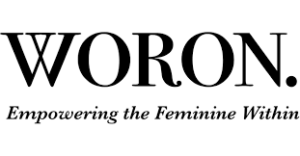
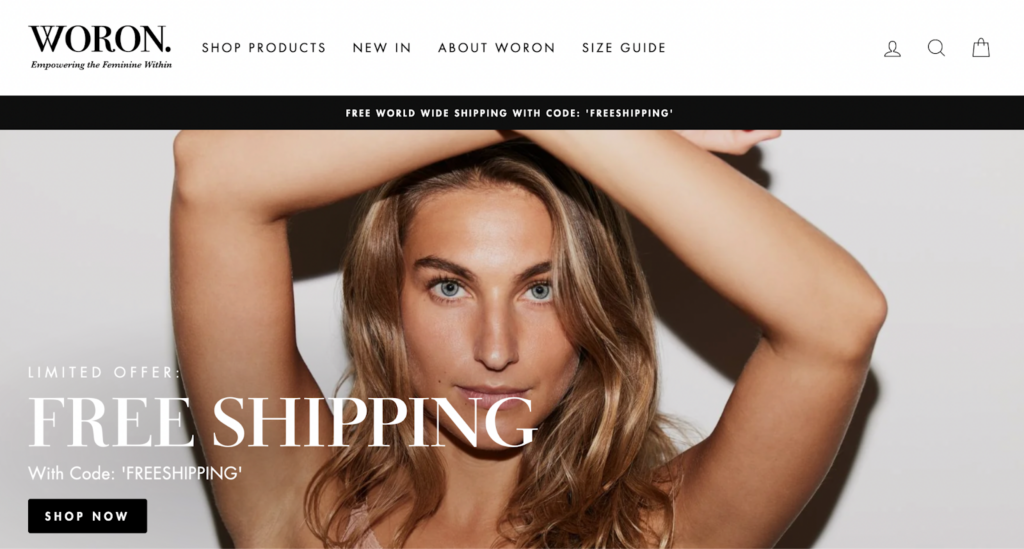
“At the core of everything we do at Woron is a strong respect for the people we work with and the environment we work within. We are well aware of the reputation of the fashion industry and strive to promote positive change.”
Woron
🌎
How do they ensure their sustainability?
Woron ensures sustainability by sourcing a medium proportion of eco-friendly materials for their bras, panties, and socks. They prioritize cellulose fibers derived from plants, including GOTS-certified organic cotton and beech-based modal by Lenzing. Also, they exclusively opt for recycled nylon, specifically ECONYL® fibers, for components like lace and mesh to reduce their environmental impacts. Furthermore, they don’t use any harmful chemicals and toxic dyes. Their bras are free of metal pokes. Lastly, Woron operates on limited production runs to minimize textile waste.
🌐
How do they ensure their ethics?
Woron maintains their ethics by disclosing their Europe-based manufacturing partners (located in Hungary, Greece, Italy, and Turkey). For example, their socks are made in a small family-owned business in Italy.
🤝
Are they part of any giving-back programs?
Woron is not known to be part of any giving-back programs.
🛍️
What is their product range?
- Best for: womenswear
- Product range: bras, underwear, loungewear, socks
- Price range: $$$
- Size range: XS–XL
Why Is It Important to Buy Products Made of More Sustainable Fabrics
It is important to buy products made from more sustainable fabrics because a sustainable textile industry has a lower carbon footprint, helps save natural resources, and is better for forests, animals, and humans alike.
Buying Sustainable Fabrics Reduces Your Carbon Footprint
The production of clothing and footwear is estimated to contribute 10% of global greenhouse gas emissions—more than all international flights and shipping combined. If the fashion industry were a country, it would be the fourth largest emitter of carbon dioxide.
One way to reduce the carbon footprint of the clothes you buy is to opt for sustainable fabrics. Sustainable fabrics, which are often made with natural or recycled fibers, have relatively low carbon footprints compared to petroleum-based fabrics. For example, organic cotton made in the US has a carbon footprint of 2.35 kg CO2 (per ton of spun fiber)—a quarter of polyester’s carbon footprint.
Buying Sustainable Fabrics Reduces the Demand for Natural Resources and Waste Management
The textile industry uses water and land to grow cotton and other fibers. It is estimated that 79 billion cubic meters of water were used for the sector worldwide in 2015. For example, producing a single cotton T-shirt requires as much water as one person drinks for 2.5 years (2,700 liters of fresh water).
Worse yet, the textile economy is vastly more linear than circular: the largest amount of resources used in clothes ended up in landfills (instead of being recycled to remake clothes). According to a report by the Ellen MacArthur Foundation,
- Less than 3% of materials used in the textile economy in 2015 came from recycled sources.
- In other words, more than 97% of resources used in making clothes are newly extracted.
When clothing items are disposed of within a short period of time—under a year in the case of half of the fast fashion clothes—the natural systems that provide raw materials for fabrics don’t have enough time to recover and regenerate, which could lead to ecological breakdown.
Sustainable fabrics are made with less water and emissions while lasting longer:
- Because they are durable, you don’t need to buy new clothes too often.
- Thus, you help reduce the pressure to extract more resources for making new items.
Similarly, making and consuming sustainable fabrics made with recycled materials reduces the demand for virgin materials while helping tackle waste management.
Buying Sustainable Fabrics Encourages Sustainable Management of Forests
Sustainable plant-based fabrics are made with raw materials from forests and plantations that are sustainably managed, such as complying with FSC standards.
When you buy sustainable plant-based fabrics, you discourage unsustainable forestry practices like illegal logging. You can help reduce deforestation, biodiversity loss, and the effects of climate change.
Buying Sustainable Fabrics Encourages Fairer Treatment of Animals
The fashion industry is rife with animal mistreatment when it comes to making animal-based fabrics like wool or silk. Every year, billions of animals suffer and die for clothing and accessories.
Buying sustainable vegan alternatives can help to reduce the pressure on raising more and more animals to meet the demand for animal-based fabrics while sacrificing their well-being and lives.
Suppose you have to buy fabrics made with, for example, wool or silk; make sure you only choose brands committed to cruelty-free products. In that case, you help advocate better treatments for animals raised within the textile industry.
Using Sustainable Fabrics Encourages Fairer Treatment of Textile Workers
Recent statistics from UNICEF estimated as many as 170 million child laborers worldwide, many of whom were engaged in some form of work in the textile industry. They don’t get paid minimum wages and often work long hours.
When you buy sustainable fabrics from brands transparent about the working conditions at their factories, you discourage the use of child labor and help promote better working conditions for textile workers.
How Can You Generally Buy More Sustainable Fabrics
The key to sustainably buying fabrics is to check on relevant environmental and original certifications.
For natural fabrics:
- Global Organic Textile Standard (GOTS): A globally recognized certification system that ensures a certain threshold of organic content has been met. It covers manufacturing, packaging, labeling, transportation, and distribution (but not what happens in the fields where crops are grown).
- USDA Certified Biobased Product: The USDA BioPreferred® Certification is a voluntary certification offered by the United States Department of Agriculture. The certification identifies products made from plants or other renewable materials.
- Ecolabel: Ecolabel is the official European Union voluntary label recognized worldwide for certified products with a guaranteed, independently verified low environmental impact. The label requires high environmental standards throughout the entire life-cycle: from raw material extraction through production and distribution to disposal. It also encourages companies to develop innovative, durable, easy-to-repair, and recyclable products.
For plant-based semi-natural/semi-synthetic fabrics:
- Forest Stewardship Council: An FSC certification ensures that the wood (or wood-like material) comes from responsibly managed forests that provide environmental, social, and economic benefits.
There are two types of FSC Certification:- FSC Forest Management Certification, with a focus on the origin of the wood—the forest.
- FSC Chain of Custody Certification, which focuses on the path from the forest to the customer’s home.
- Program for Endorsement of Forest Certification: PEFC’s approaches to sustainable forest management are in line with protecting the forests globally and locally and making the certificate work for everyone. Getting a PEFC certification is strict enough to ensure the sustainable management of a forest is socially just, ecologically sound, and economically viable but attainable not only by big but small forest owners.
For recycled fabrics:
- Recycled Claim Standard (RCS): The Textile Exchange RCS was originally developed as an international, voluntary standard that sets requirements for third-party certification of Recycled input and chain of custody.
- The Global Recycled Standard (GRS): The Global Recycled Standard (GRS) is an international, voluntary, full product standard that sets requirements for third-party certification of Recycled Content, chain of custody, social and environmental practices, and chemical restrictions. It can be used for any product with more than 20% recycled material.
For all types of fabrics:
- STeP by OEKO-TEX®: STeP by OEKO-TEX® is an independent certification system for brands, retailers, and manufacturers from the textile and leather industry. It communicates organizational environmental measures, including reducing carbon footprint and water usage.
- OEKO-TEX® Standard 100: OEKO-TEX® labels aim to ensure that products pose no risk to human health (i.e. containing banned chemicals).
Some certifications that are signaling brands’ efforts toward lowered environmental impacts and a circular economy are:
- B Corp Certification: The label B Corp is a certification reserved for for-profit companies. Certified holders are assessed on their social and environmental impacts.
- Cradle2Cradle certification: Cradle2Cradle provides a standardized approach to material circularity. It assesses whether products have been suitably designed and made with the circular economy in mind covering five critical categories: material health, material reuse, renewable energy and carbon management, water stewardship, and social fairness.
Final Thoughts
Underwear is a category of clothing that is often high-impact due to the materials conventionally used for elasticity, not to mention their relatively short lifespan. Thus, it is important to shop with ethics and sustainability in mind when choosing your next pair of underwear.
By purchasing underwear from brands that commit to sustainability, you support their mission to create a fairer and less harmful textile industry for all lives on Earth.
Here is the list (again) of the most sustainable underwear brands:
- Subset
- KENT
- WAMA
- The Very Good Bra
- Organic Basics
- Boody
- Thunderpants
- TomboyX
- Pantee
- Hara The Label
- Woron
To make your use of these clothing items even more sustainable, follow these steps:
- Keep your underwear for as long as possible.
- At the end-of-life of your underwear, upcycle the materials to extend their usage and arrange for them to be recycled or properly disposed of.
Stay impactful,

Sources
- Impactful Ninja: How Sustainable Are Synthetic Fabrics? A Life-Cycle Analysis
- Science Direct: Life-cycle assessment (LCA)
- Subset: Home
- KENT: Home
- WAMA: Home
- The Very Good Bra: Home
- Organic Basic: Home
- Boody: Home
- Thunderpants: Home
- TomboyX: Home
- Pantee: Home
- HARA the Label: Home
- Woron: Home
- Subset: Becoming Carbon Neutral
- Good On You: Brand Directory | Subset
- Subset: SUBSET x Supercircle | Recycle your rejects
- Global Organic Textile Standard: Home
- Impactful Ninja: How Sustainable Are Organic Cotton Fabrics? A Life-Cycle Analysis
- Impactful Ninja: How Sustainable Are TENCEL Fabrics? A Life-Cycle Analysis
- Impactful Ninja: How Sustainable Are Recycled Polyester Fabrics? A Life-Cycle Analysis
- Impactful Ninja: How Sustainable Are Recycled Nylon Fabrics? A Life-Cycle Analysis
- Subset: Tank Bralette
- Subset: Our Materials
- Subset: 2022 Impact Report
- Subset: Organic Cotton Supply Chain
- Fairtrade: Fairtrade Standard for Small-Scale Producer Organisations
- I Support the Girls: Home
- Cultivate Initiatives: Home
- CHANGE CLIMATE: KENT is Climate-Neutral Certified
- Impactful Ninja: How Sustainable Are Organic Cotton Fabrics? A Life-Cycle Analysis
- Global Organic Textile Standard: Home
- KENT: Sustainability
- KENT: HOW TO Plant Your Pants®
- KENT: Compost Club
- CHANGE CLIMATE: Climate Neutral Standard
- Good On You: Brand Directory | KENT
- One Percent For The Planet: Home
- Impactful Ninja: How Sustainable Are Organic Hemp Fabrics? A Life-Cycle Analysis
- WAMA Underwear: Our Story
- WAMA Underwear: Our Supply Chain
- Science Direct: Retting method
- OEKO-TEX® : Home
- AMFORI: Is BSCI a certificate, a label or a standard?
- ETHICAL MADE EASY: WAMA Underwear
- WAMA Underwear: SUPPLIER CODE OF CONDUCT
- Good On You: Brand Directory | WAMA
- Green America Certified Business: Home
- PETA-Approved Vegan: Search
- B Corporation: The Very Good Bra
- The Very Good Bra: Bras
- The Very Good Bra: Briefs
- The Very Good Bra: Our Story
- The Very Good Bra: V for Victory Bra
- The Very Good Bra: How we work
- The Very Good Bra: Our Responsible Business Practices
- The Very Good Bra: Replacement straps
- Good On You: Brand Directory | The Very Good Bra
- The Very Good Bra: Factory Code of Conduct
- Iequalchange: Home
- The Social Outfit: Home
- Whitehouse Design: Home
- Thread Together: Home
- Organic Basics: FAQ
- Impactful Ninja: How Sustainable Are Organic Fabrics? A Life-Cycle Analysis
- OEKO-TEX: STANDARD 100 by OEKO-TEX®
- Impactful Ninja: How Sustainable Are Recycled Cotton Fabrics? A Life-Cycle Analysis
- Organic Basics: Recycled Cotton Move Bralette
- Made2Flow: Home
- One Carbon World: Home
- B Corporation: Organic Basics
- Organic Basics: Factories
- Good On You: Brand Directory | Organic Basics
- Organic Basics: Our Impact
- Beam Impact: Home
- Organic Basics: FAQ
- Impactful Ninja: How Sustainable Are Organic Fabrics? A Life-Cycle Analysis
- OEKO-TEX: STANDARD 100 by OEKO-TEX®
- Impactful Ninja: How Sustainable Are Recycled Cotton Fabrics? A Life-Cycle Analysis
- Organic Basics: Recycled Cotton Move Bralette
- Made2Flow: Home
- One Carbon World: Home
- B Corporation: Organic Basics
- Organic Basics: Factories
- Good On You: Brand Directory | Organic Basics
- Organic Basics: Our Impact
- Beam Impact: Home
- B Corporation: Boody
- Boody: Women’s Underwear
- Boody: Men’s Underwear
- Impactful Ninja: How Sustainable Are Bamboo Fabrics? A Life-Cycle Analysis
- Boody: About Boody
- Good On You: Brand Directory | Boody
- Impactful Ninja: How Sustainable Are Bamboo Lyocell Fabrics? A Life-Cycle Analysis
- Boody: LYOLYTE™ Lyocell Underwear
- Impactful Ninja: How Sustainable Are Bamboo Viscose Fabrics? A Life-Cycle Analysis
- Boody: Our Process
- Impactful Ninja: How Sustainable Are Cotton Fabrics? A Life-Cycle Analysis
- Boody: The Goodness Loop
- Boody: Code of Conduct
- International Labour Organization: Fundamental Principles and Rights at Work
- Worldwide Responsible Accredited Production (WRAP): Home
- One Percent For The Planet: Home
- Boody: Soft Jersey Beanie
- Chris O’Brien Lifehouse: Home
- Thread Together: Home
- Good On You: Brand Directory | Thunderpants
- Thunderpants: The ultimate undie
- Impactful Ninja: How Sustainable Are Organic Cotton Fabrics? A Life-Cycle Analysis
- Global Organic Textile Standard: Home
- Fairtrade: Home
- Textile Exchange: Organic Content Standard
- Thunderpants: Supply Chain
- EcoEnclose: Home
- Sustainable Jungle: 11 Sustainable & Ethical Underwear Brands For Eco-Conscious Comfort
- Thunderpants: FAQs
- The Loveland Foundation: Home
- Black Girl Ventures: Home
- St John’s Center for Opportunity: Home
- Asian Americans Advancing Justice – Atlanta: Home
- Dress for Success of Oregon: Home
- B Corporation: TomboyX
- Impactful Ninja: How Sustainable Are TENCELTM Fabrics? A Life-Cycle Analysis
- Better Cotton: Better Cotton Initiative
- TomboyX: Sustainability
- TomboyX: Recycled Selection
- TomboyX: Recycled Tucking Underwear
- Good On You: Brand Directory | TomboyX
- WRAP Compliance; Certification Explained
- Fair Labor Association: Home
- TomboyX: About Us
- Good On You: Brand Directory | Pantee
- Pantee: Our Impact
- Pantee: Deadstock Fabrics
- Global Organic Textile Standard: Home
- Impactful Ninja: How Sustainable Are Organic Cotton Fabrics? A Life-Cycle Analysis
- Impactful Ninja: How Sustainable Are Recycled Nylon Fabrics? A Life-Cycle Analysis
- Impactful Ninja: How Sustainable Are Cotton Fabrics? A Life-Cycle Analysis
- Impactful Ninja: How Sustainable Are Spandex Fabrics? A Life-Cycle Analysis
- Pantee: About Us
- Invisible Company: INVISIBLEBAG
- Pantee: Packaging
- SEDEX: Sedex Members Ethical Trade Audit – SMETA Best Practice Guidance
- International Labour Organization: ILO Declaration on Fundamental Principles and Rights at Work
- One Percent For The Planet: Home
- HARA The Label: Bamboo Fabric
- OEKO-TEX: OEKO-TEX® Standard 100
- Good On You: Brand Directory | HARA the Label
- HARA the Label: Natural dyes
- Good On You: Brand Directory | Woron
- Impactful Ninja: How Sustainable Are Modal Fabrics? A Life-Cycle Analysis
- Lenzing: Home
- Impactful Ninja: How Sustainable Are Econyl Fabrics? A Life-Cycle Analysis
- Woron: About Woron
- European Parliament: The impact of textile production and waste on the environment (infographic)
- Science Direct: The challenge of “Depeche Mode” in the fashion industry – Does the industry have the capacity to become sustainable through circular economic principles, a scoping review
- Science Direct: Carbon Footprint of Textile and Clothing Products
- European Parliament: Environmental impact of the textile and clothing industry
- European Parliament: What if fashion were good for the planet?
- Ellen MacArthur Foundation: A New Textiles Economy: Redesigning fashion’s future
- McKinsey: Style that’s sustainable: A new fast-fashion formula
- Forest Stewardship Council: Home
- Our World in Data: Deforestation and Forest Loss
- Our World in Data: Renewable Energy
- Peta: Animals Used For Clothing
- The Guardian: Child labour in the fashion supply chain
- Impactful Ninja: How Sustainable Are Natural Fabrics? A Life-Cycle Analysis
- Global Organic Textile Standard (GOTS): Home
- BioPreferred: WHAT IS THE BIOPREFERRED PROGRAM?
- European Commission: Environment | EU Ecolabel
- Impactful Ninja: How Sustainable Are Semi-Natural/Semi-Synthetic Fabrics? A Life-Cycle Analysis
- Forest Stewardship Council
- FSC Forest Management Certification
- FSC Chain of Custody Certification
- Textile Exchange: The RCS and GRS are designed to boost the use of recycled materials
- Program for Endorsement of Forest Certification
- Impactful Ninja: How Sustainable Are Recycled Fabrics? A Life-Cycle Analysis
- Textile Exchange: Recycled Claim Standard
- Textile Exchange: Global Recycled Standard
- OEKO-TEX: Certification according to STeP by OEKO-TEX®
- OEKO-TEX: OEKO-TEX® Standard 100
- B Corp Certification: Home
- C2CCertified: Home




